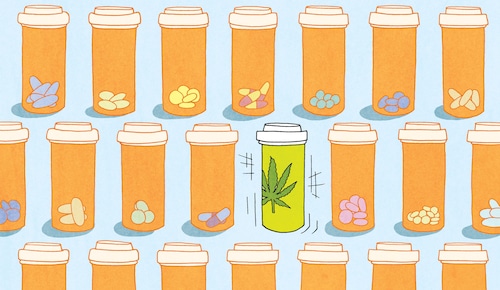When the recreational use of cannabis was legalized in New York State, it was widely predicted that the medical marijuana business would suffer as a result.
Now, sales data provided to NY Cannabis Insider confirms this was the case, and the outlook doesn’t get any brighter moving forward.
New York’s ROs (Registered Operators) have seen their share of total cannabis sales “shrink significantly,” said Brendan Mitchel-Chesebro, marketing content manager for BDSA, a cannabis data analytics company based in Louisville, Colorado.
For 2022, the first full year subsequent to New York’s March 2021 legalization, medical marijuana sales totaled nearly $169 million, according to BDSA.
For 2023, total medical cannabis sales declined to $148 million – a 12% decrease.
The most up-to-date figures for the months of May and June 2024 show that medical dispensary sales totaled $23.4 million, and BDSA’s full-year projection for 2024 show medical cannabis sales totaling approximately $134 million.
The downward trend in state medical sales will continue through 2028, according to BDSA — which tracks cannabis sales data in 15 states.
The company’s latest New York forecast for 2025 is $119 million in medical marijuana sales compared to $1.4 billion in recreational use sales.
And in 2026, medical sales are expected to drop to $108 million while recreational use sales increase to $1.7 billion.
In 2028, the most forward-looking projection by BDSA, medical marijuana sales will total about $93 million, while recreational sales will increase to $2.3 billion.
The market share leader for medical cannabis sales is Curaleaf, which (based on the latest figures) holds a narrow lead over PharmaCann — 26% to 25%.
Rounding out the top five MSOs in the medical channel — in terms of their market share of total retail sales for May/June 2024 — were Vireo at 12%, GTI (Green Thumb Industries) at 11% and Acreage at 5%.
When New York State enacted The Compassionate Care Act in 2014, then-Gov. Andrew Cuomo was not a big fan of cannabis — to put it mildly.
As a result, very tight restrictions were put on the industry.
Chief among these was the requirement that all companies be vertically integrated, meaning they must control all aspects of operation — cultivation, manufacturing, transportation, distribution and dispensing.
Vertical integration is expensive to set up in the medical marijuana space, so this has been a dampener on sales, compared to many other states that have more lax regulations.
For instance, Mitchel-Chesebro noted that Ohio, with a much smaller population, rang up $430 million in marijuana medical marijuana sales in 2023.
Another major obstacle was a strict curb on the type of disorders that could be treated with medical marijuana, though that limitation has eased somewhat since 2014.
At the same time, an industry spokesperson pointed out that the state has been slow to make any other improvements in the medical space since the program’s launch.
For example, industry representatives have unsuccessfully lobbied for out-of-state reciprocity for medical card holders — which would improve patient access and equity.
And the NYMCIA (New York Medical Cannabis Industry Association) has pushed for eliminating the excise tax on medical cannabis and authorizing health insurance coverage for patients, but those changes have yet to be adopted.
Mitchel-Chesebro noted other deterrents leading to the “fairly small” medical marijuana market in New York, such as the “high costs of compliance” and “grey market sources,” where folks suffering from an ailment don’t have to hassle with getting a prescription.
An industry trade group, as well as a communications firm representing Curaleaf, did not immediately respond to requests for comment.



